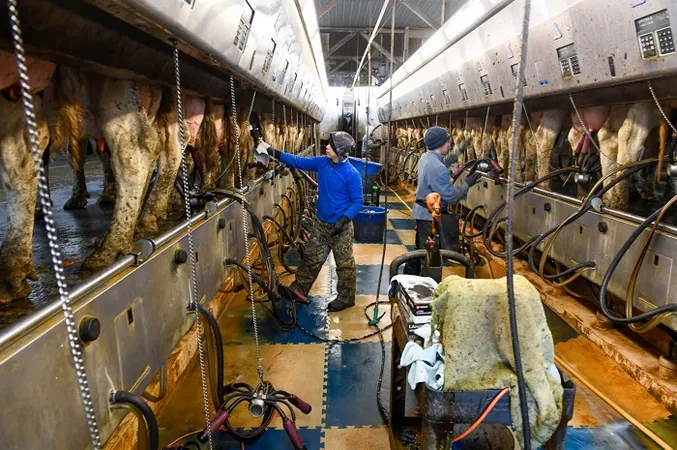
Urgent CDC Recommendations: Expanded Bird Flu Testing for Farmworkers
2024-11-08
Author: Charlotte
Overview
In a critical update released during a press briefing on November 7, the Centers for Disease Control and Prevention (CDC) has dramatically revised its guidelines regarding bird flu testing for farmworkers. Previously, testing was recommended only for symptomatic individuals who were exposed to H5N1-infected animals. However, new evidence suggests that asymptomatic farmworkers may also be at risk, prompting the agency to broaden its testing criteria.
Groundbreaking Research
A recent CDC study uncovered instances of H5N1 infection in farmworkers who did not exhibit any noticeable symptoms. This groundbreaking research involved collecting blood samples from 115 farmworkers in Michigan and Colorado working on dairy farms where H5N1 outbreaks occurred. Alarmingly, eight of these individuals tested positive for antibodies indicating recent H5N1 infections, suggesting a substantial risk that had previously gone unnoticed.
New Testing Guidelines
Nirav Shah, the CDC's principal deputy director, emphasized the need for public health policies to evolve in response to this new data. “We must cast a wider net in terms of who is offered a test,” he stated, recognizing the potential dangers posed by asymptomatic infections.
Recommendations for Farmworkers
With the newly expanded guidelines, the CDC recommends testing all farmworkers exposed to infected animals, even if they show no symptoms. This is especially vital for workers who lacked adequate personal protective equipment (PPE) during their duties, such as milking infected cows or culling infected poultry. The agency also advocates for the use of antiviral medication Tamiflu to decrease the chances of asymptomatic cases developing into symptomatic ones, thus potentially reducing human-to-human transmission of the virus.
Challenges Faced by Farmworkers
The urgency of these recommendations comes amid mounting stresses faced by farmworkers. Many are reluctant to utilize available PPE due to discomfort and the challenging tasks involved in animal handling. Further complicating matters are concerns among farmworkers about the economic ramifications of testing positive for H5N1. As noted by Elizabeth Strater of United Farm Workers, a positive test could force workers into an unpaid isolation period, jeopardizing their income and job security.
Impact on Farm Operations
Adding to this situation is the burden on farm owners, who may struggle to maintain their operations if significant portions of their workforce are sidelined by testing or illness. With dairy cows requiring consistent care, there's a pressing question: who will take over these essential tasks if workers are unable to do their jobs?
Public Health Efforts
To mitigate these challenges, public health officials are working to foster better communication and trust between health agencies and farming communities. Providing financial support to cover wages lost during isolation could incentivize more farmworkers to undergo testing and help combat the potential spread of H5N1.
Conclusion
With this new evidence and guidance, the CDC aims to protect both farmworkers and the larger community from the ill effects of H5N1, reinforcing the importance of vigilance as we navigate these unprecedented public health challenges.









 Brasil (PT)
Brasil (PT)
 Canada (EN)
Canada (EN)
 Chile (ES)
Chile (ES)
 España (ES)
España (ES)
 France (FR)
France (FR)
 Hong Kong (EN)
Hong Kong (EN)
 Italia (IT)
Italia (IT)
 日本 (JA)
日本 (JA)
 Magyarország (HU)
Magyarország (HU)
 Norge (NO)
Norge (NO)
 Polska (PL)
Polska (PL)
 Schweiz (DE)
Schweiz (DE)
 Singapore (EN)
Singapore (EN)
 Sverige (SV)
Sverige (SV)
 Suomi (FI)
Suomi (FI)
 Türkiye (TR)
Türkiye (TR)